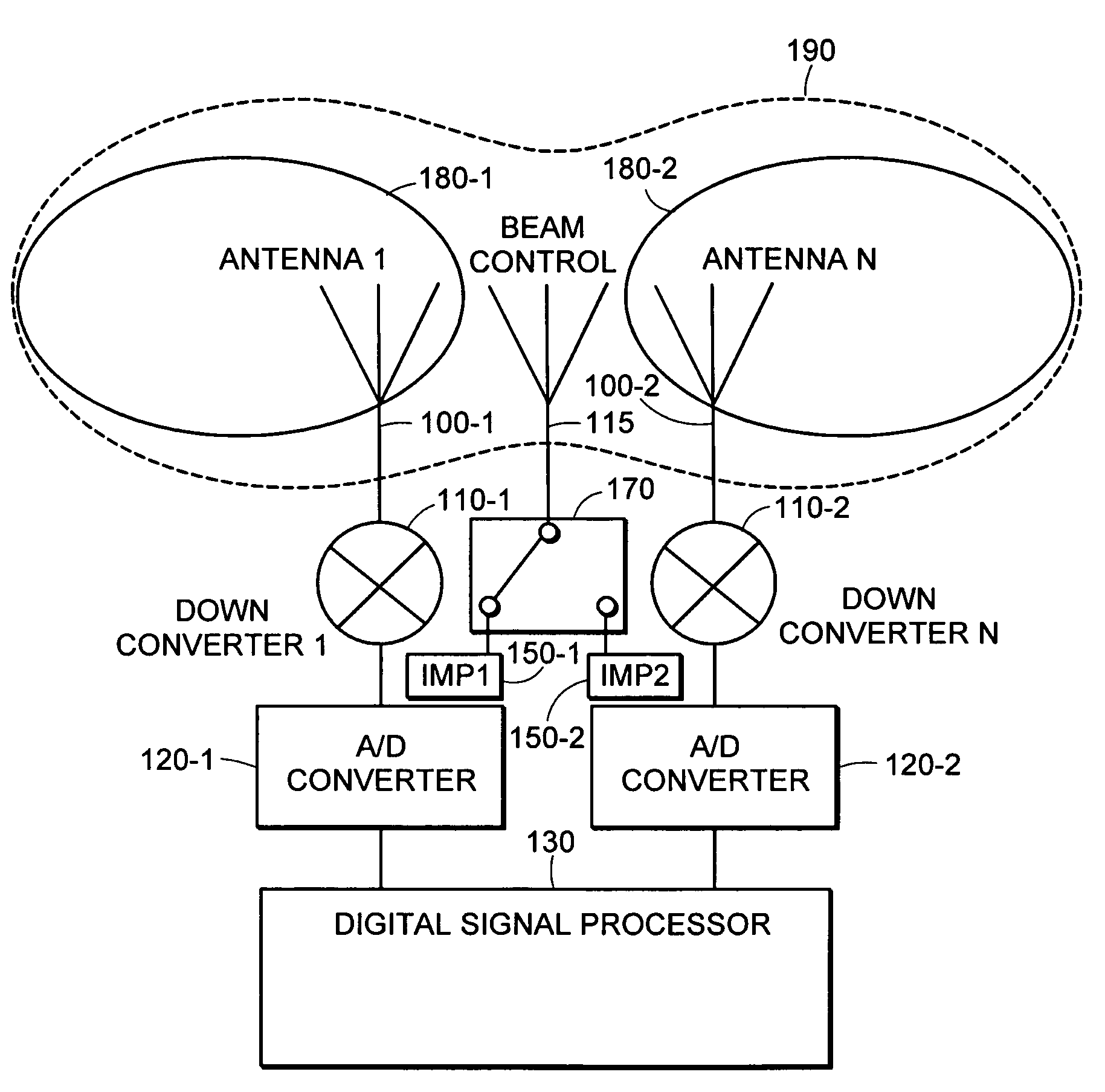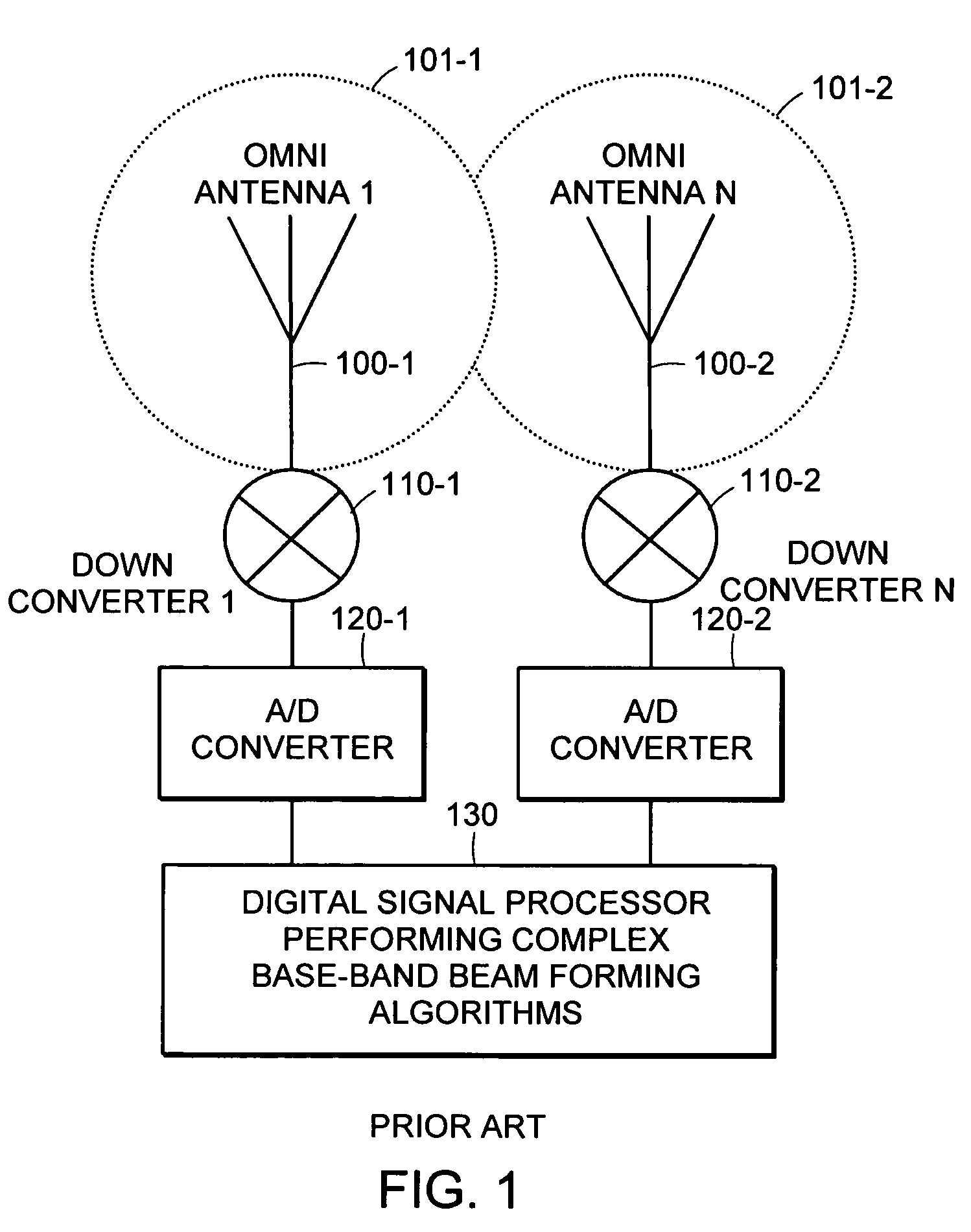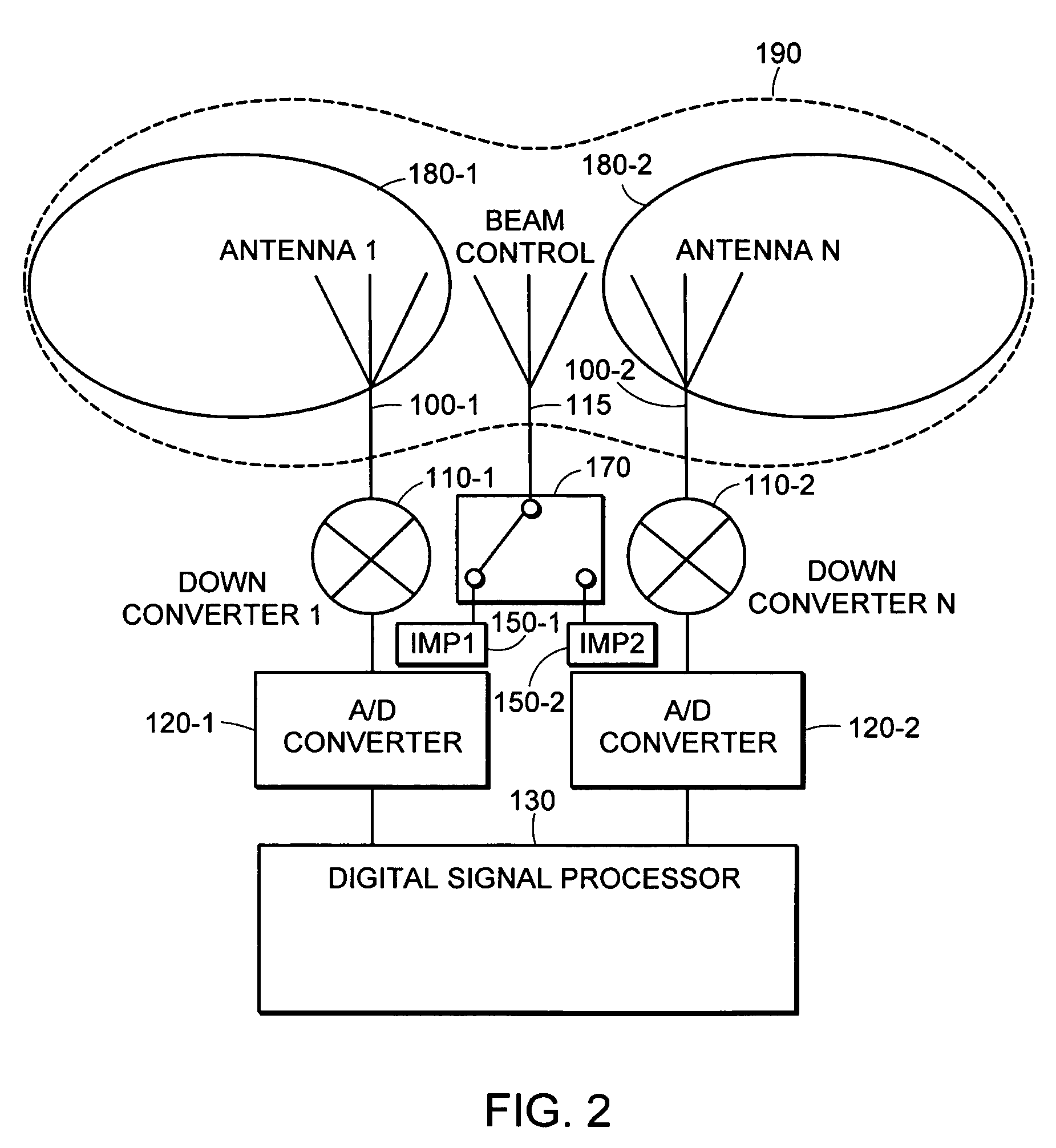Low cost multiple pattern antenna for use with multiple receiver systems
a receiver system and low cost technology, applied in the direction of resonant antennas, individually energized antenna arrays, different interacting antenna combinations, etc., can solve the problems of low performance, large influence on performance, and poor corresponding antenna gains
- Summary
- Abstract
- Description
- Claims
- Application Information
AI Technical Summary
Benefits of technology
Problems solved by technology
Method used
Image
Examples
Embodiment Construction
[0029]A description of preferred embodiments of the invention follows.
[0030]FIG. 1 illustrates prior art multiple element beam former. Such systems are characterized by having at least two active or radiating antenna elements 100-1, 100-2 that have associated omni-directional radiating patterns 101-1, 101-2, respectively. The antenna elements 100 are each connected to a corresponding radio receiver, such as down-converters 110-1 and 110-2, which provide baseband signals to a respective pair of Analog-to-Digital (A / D) converters 120-1, 120-2. The digital received signals are fed to a digital signal processor 130. The digital signal processor 130 then performs baseband beam forming algorithms, such as combining the signals received from the antenna elements 100 with complex magnitude and phase weighting functions.
[0031]One difficulty with this type of system is that performance is heavily influenced by the spatial separation and geometry of the antenna elements 100. For example, if th...
PUM
 Login to View More
Login to View More Abstract
Description
Claims
Application Information
 Login to View More
Login to View More - R&D
- Intellectual Property
- Life Sciences
- Materials
- Tech Scout
- Unparalleled Data Quality
- Higher Quality Content
- 60% Fewer Hallucinations
Browse by: Latest US Patents, China's latest patents, Technical Efficacy Thesaurus, Application Domain, Technology Topic, Popular Technical Reports.
© 2025 PatSnap. All rights reserved.Legal|Privacy policy|Modern Slavery Act Transparency Statement|Sitemap|About US| Contact US: help@patsnap.com



